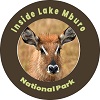Lake Mburo giraffe translocation was started in 2015 by the Uganda Wildlife Authority (UWA), to translocate giraffes from Murchison Falls National Park to Lake Mburo National Park. Fifteen giraffes were first translocated from Murchison Falls in northern Uganda to Lake Mburo in western Uganda.
The translocation is part of the UWA’s attempt to biologically control acacia trees in Lake Mburo National Park, as well as diversify the wildlife species and boost tourism in the area.

Four males and 11 females were relocated from Murchison Falls. As one of the most endangered giraffe sub-species, with only a few hundred left in the wild, the Rothschild’s giraffe is endemic to Kenya and parts of Uganda. Fewer than 700 are believed to survive in the wild and around 450 are kept in zoos.
The Director of Tourism for the UWA Raymond Engena said, “Ecological studies were conducted before the relocation of the giraffes to ensure the safety of the animals. The vegetation in Lake Mburo National Park supports the giraffes and we have received positive reports from various people commenting on the health of our giraffes in the park. This gives us hope that the giraffes’ presence will boost tourism in the park, as it is also close to Kampala city.”
“As a way to promote the park and its activities, we are securing some safari park trucks to help on game drives for walk-in travelers, as well as a new boat, and are working to increase the number of game tracks within the park before December 2016.”
“This, ‘Lake Mburo Giraffe translocation’ exercise, is aimed at increasing the home range population of giraffes in Murchison Falls National Park. It will also help to diversify giraffe species and help boost game drives in the southern banks of the park,” Mr. Muhangi said.
Other animals in Lake Mburo National Park include topi, eland, buffalo, impala, hippo, baboon, monkeys, reptiles, waterbuck, bushbuck, leopard, hyena, and more than 300 bird species!
Animal Translocation Global Practice
According to UWA, the relocation exercise which is practiced globally will also help manage the environment by reducing habitat destruction and allowing for the restoration of the degraded ones.
The 15 giraffes which included eight females were moved to Mburo and were expected to produce at least within 15 months of their arrival but alas, they only helped in eating the acacia hockey which had been growing out of hand in the park.
Due to the fact that they may have translocated semi-adults, this made them take longer. However, later the following year, one giraffe calf was landed and born in Lake Mburo successfully.
Facts About Giraffes and Lake Mburo Giraffe Translocation
The giraffe is the tallest mammal in the world, standing at around 4m to 5m high, and the tallest giraffes can be recorded at up to 5.9m.
Despite being incredibly tall, giraffes still only have seven vertebrae in their neck – the same number as humans and most other mammals.
A giraffe’s neck is too short to reach the ground. As a result, it has to awkwardly spread or bend its front legs to reach the ground for a drink of water.
Giraffes only need to be drunk once every few days. Most of their water comes from the plants they eat.
Unlike most other four-legged mammals, giraffes swing both legs on the same side at almost the same time during their walk, known as ‘pacing’. This movement is lost, however, when the giraffe breaks into a gallop.
Giraffe feet are the size of a dinner plate with a diameter of 30cm.
Both male and female giraffes have ‘horns’ already at birth. These ossicones lie flat and are not attached to the skull to avoid injury at birth. They only fuse with the skull later in life.
Female giraffes give birth standing up. Their young fall about 2m to the ground and can stand up within an hour of birth.
The gestation period for a giraffe is 457 days, which is about 15 months. Generally, only a single baby is born.
About 50 percent of all giraffe calves do not survive their first year.
Just like human fingerprints, no two giraffes have the same coat pattern.
Giraffes have an efficient nasal cooling system to regulate brain temperature up to 3°C lower than the rest of the body.
To protect the giraffe’s brain from sudden changes in blood pressure when it lowers its head to drink, it has valves to stop the back-flow of blood and elastic-walled vessels that dilate and constrict to manage the flow.
Giraffe tongues are bluish-purple and between 45cm and 50cm long.
A giraffe’s heart can weigh approximately 11kg and this is the biggest of any land mammal. It can pump 60 liters of blood around its body every minute at a blood pressure twice that of an average human.
Other Activities
You may also journey through the breathtaking landscapes of Uganda from Kampala to Bwindi Impenetrable Forest, home to mountain gorillas, for gorilla trekking in Uganda. Uganda is home to incredible wildlife in Africa.
You can make an extension to visit Bwindi Forest on a budget gorilla safari to encounter the mountain gorillas. For those that wish to see mountain gorillas in Rwanda, visit Volcanoes National Park, which is famous for gorillas and golden monkeys.
There are over 50 leopards here, but most can be sighted during an early morning game drive or evening safari game drive. You can also have a greater chance to see other wildlife species such as buffaloes, impalas, topis, bushbucks, reedbucks, oribis, and warthogs.
